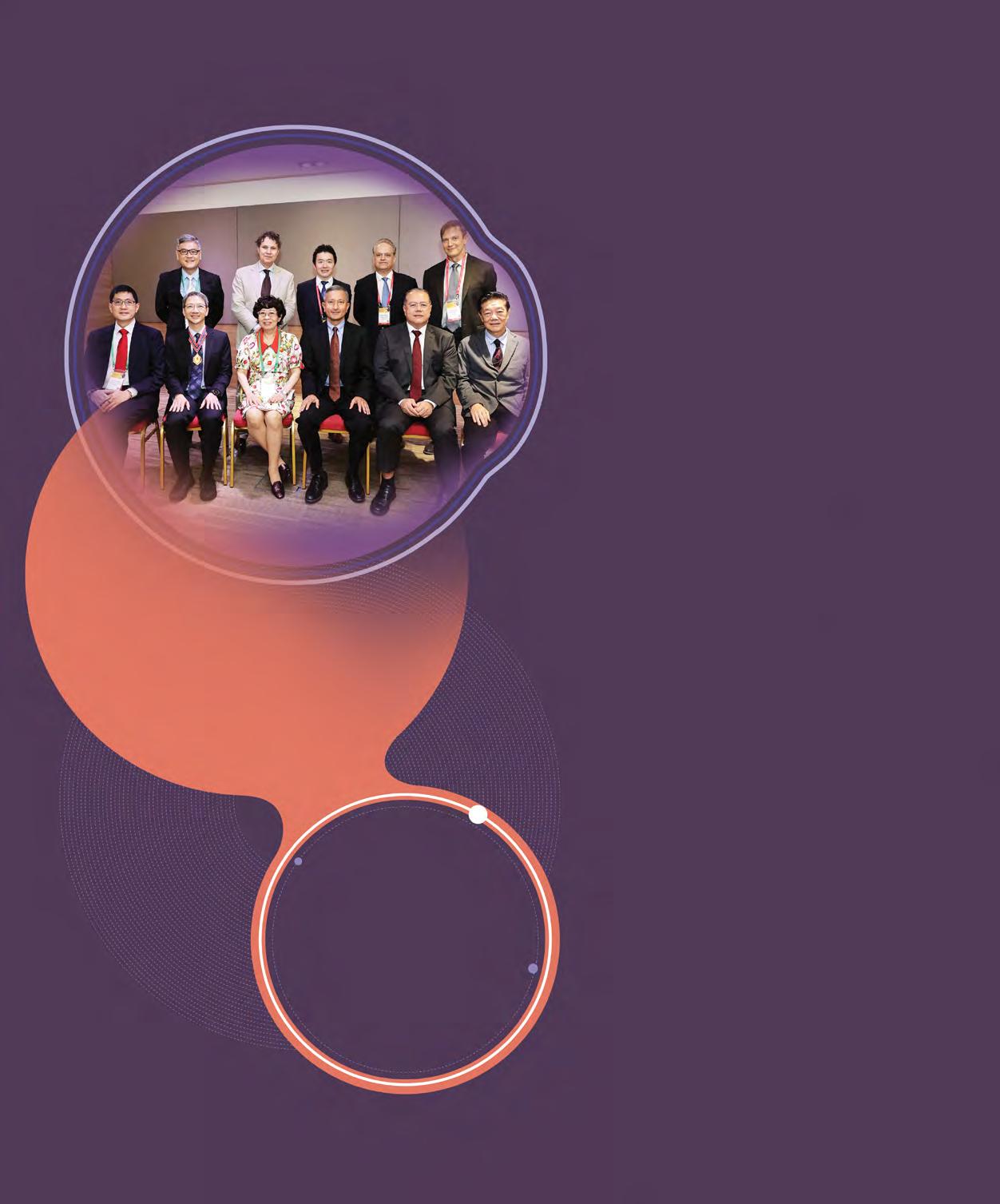
1 minute read
Global Oculoplastic Surgeons and Endocrinologists
Gather at SNEC
Guest of Honour
Advertisement
Dr Vivian Balakrishnan, Minister for Foreign Affairs (seated centre) with Associate Professor Seah Lay Leng, ITEDS President and Senior Consultant, SNEC (seated third from left), and Professor Aung Tin, CEO, SNEC (seated second from right) with distinguished faculty and guests.
The inaugural Asia-Pacific Orbital Disease and Thyroid Eye Disease Meeting on 25 to 26 May 2023 saw 200 international and local delegates gathered at SNEC. Themed “Orbiting the MultiFaceted World of Thyroid and Orbital Diseases”, there were 12 stimulating sessions, featuring more than 20 international speakers. This was the first in-person conference by SNEC since the COVID-19 pandemic.
Dr Vivian Balakrishnan, Minister for Foreign Affairs and former Medical Director of SNEC, was the Guest of Honour. During the event, expert orbital surgeons shared their knowledge and experiences regarding the management of various orbital diseases and exciting research initiatives, and discussed new approaches to the orbit, which have increased and strengthened our options and surgical techniques.
Ophthalmologists and endocrinologists also shared their insights into risk factors, management and treatment of Thyroid Eye Disease. The conference was chaired by Clinical Associate Professor Seah Lay Leng, Senior Consultant, Oculoplastic Dept, SNEC, who is also President of the International Thyroid Eye Disease Society (ITEDS).
Renowned keynote speakers included Clinical Professor Peter Dolman from the University of British Columbia, who delivered the 2nd SNEC VisionSave Lecture on “The Future of Management of Graves’ Hyperthyroidism”. Meanwhile, Professor Lelio Baldedschi from the Catholic University of Louvain Saint Luc Academic Hospital, delivered the Richard Fan Lectureship and discussed “Improving the Safety of Orbital Surgery”.
New advancements have led to a better understanding of orbital diseases on a molecular basis, providing new possibilities for targeted therapies. The symposium allowed participants to have a more comprehensive understanding of the entire spectrum of orbital diseases, enabling us to better serve our patients. The event was coorganised by SNEC, College of Ophthalmologists, Academy of Medicine Singapore and supported by the International Thyroid Eye Disease Society.








